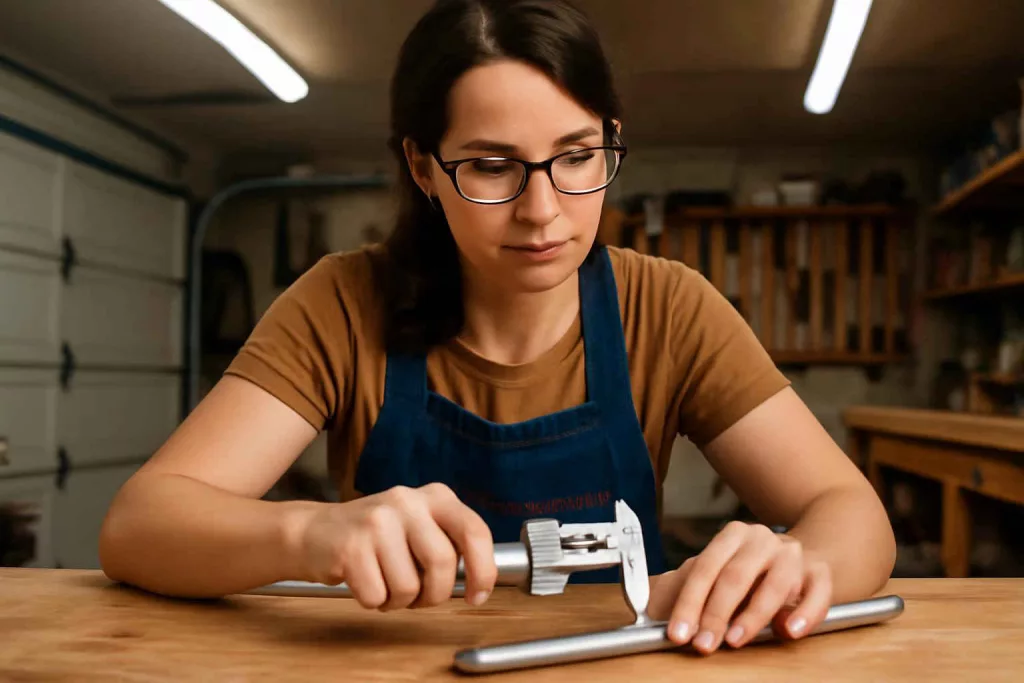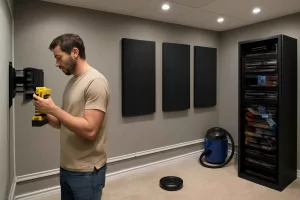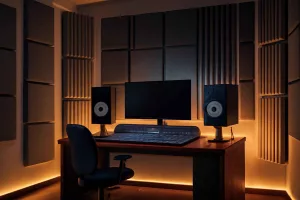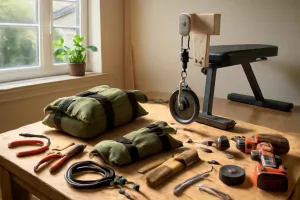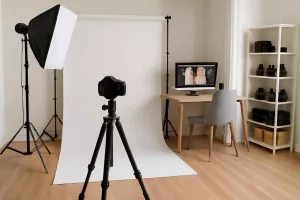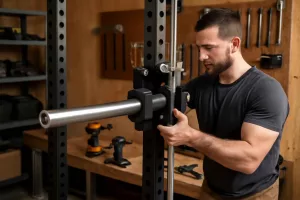When precision matters in woodworking, metalworking, or any DIY endeavor, having the right measurement tools can make all the difference. Digital calipers combine speed, accuracy, and ease of use in one compact instrument, helping you measure internal, external, and depth dimensions with confidence. Whether you’re a hobbyist, professional craftsman, or garage tinkerer, choosing the best digital calipers for your needs can streamline workflow and ensure your projects turn out perfectly every time.
In this comprehensive buying guide, we explore the crucial factors to consider when shopping for electronic calipers, highlight our top picks for different budgets and applications, and offer expert tips on setup, measurement techniques, and maintenance. Along the way, you’ll find links to helpful internal resources—such as how to calibrate your table saw for complementary precision work—and practical advice to get the most from your new tool.
Why Choose Digital Calipers for Precision Measurements?
Traditional vernier calipers demand careful eye coordination and manual reading of tiny scales, which can slow down your workflow and introduce human error. By contrast, digital calipers display measurements on an easy-to-read LCD, instantly switching between millimeters and inches at the push of a button. This rapid readout minimizes mistakes and speeds up repetitive tasks—especially important when you’re producing multiple parts to exact specifications.
Digital calipers also often come with electronic output capabilities, allowing you to transfer data directly to a computer or digital readout device for logging and analysis. This feature is invaluable for professional environments where documentation and quality control matter. For DIYers, the convenience of a quick zero/reset function and battery life indicators makes day-to-day use straightforward and reliable.
Compared to analog counterparts, electronic calipers typically offer higher resolution and accuracy, often measuring down to 0.01 mm (0.0005 inches). If you’ve ever struggled with inconsistent fit or alignment due to measurement variance, upgrading to a digital instrument can be a game-changer in both wood and metal projects.
Key Features to Look for in Digital Calipers
Accuracy and Resolution
Accuracy defines how close a measurement comes to the true value, while resolution indicates the smallest increment you can measure. For most home and workshop applications, look for digital calipers with accuracy of ±0.02 mm and resolution of 0.01 mm. Higher-end models may offer ±0.01 mm accuracy, but these are more costly and often overkill for casual DIY use.
Build Material and Durability
Stainless steel construction is the industry standard, giving calipers resistance to rust, wear, and minor impacts. Some manufacturers also coat sliding surfaces with black oxide or other treatments to reduce glare and enhance longevity. Avoid plastic components except for the display housing, and ensure jaws remain true and parallel under light pressure.
Display and Controls
Look for a clear, backlit LCD that remains legible in low-light shop environments. Buttons should include On/Off, Zero/Reset, and mm/inch toggle, all ergonomically placed for one-handed operation. Models with a lock screw let you secure the jaw position before reading or recording measurements, preventing accidental movement.
Water and Dust Resistance
If you work with coolants, cutting fluids, or dusty materials, a waterproof seal (often rated IP54 or higher) will protect the electronics. Even occasional exposure to grime can shorten battery life or damage circuits, so consider sealed designs if your workshop conditions are on the harsh side.
Data Output and Connectivity
Some calipers feature USB or Bluetooth connectivity, enabling seamless transfer of measurements to computers, tablets, or smartphones. This data logging can streamline record-keeping for quality control or batch production. If you need digital integration, verify that the model supports your preferred operating system and comes with the necessary cable or wireless interface.
Top Digital Calipers for Precision Measurements
1. Mitutoyo 500-196-30 ABSOLUTE Digimatic Caliper
Accuracy: ±0.02 mm | Resolution: 0.01 mm | Material: Stainless steel | IP Rating: IP67
The Mitutoyo ABSOLUTE line represents the gold standard in digital calipers, offering exceptional build quality and a high-contrast, easy-to-read display. Its IP67 rating ensures full protection against dust and temporary water immersion—ideal for professional setups. This model’s ABSOLUTE encoder system remembers the origin point even after power-off, eliminating the need for recalibration each time you switch it on. Available on Amazon: Mitutoyo 500-196-30.
2. iGaging IPS Absolute Digital Caliper
Accuracy: ±0.02 mm | Resolution: 0.01 mm | Material: Hardened stainless steel | IP Rating: IP54
iGaging’s ABSOLUTE calipers are budget-friendly while maintaining reliable performance. The display auto-zeroes on startup, and the hardened steel surface resists scratches from chips and debris. With a data output port included, it’s a versatile choice for hobbyists who might upgrade to data logging later. Shop now: iGaging IPS Absolute.
3. Neiko 01407A Electronic Digital Caliper
Accuracy: ±0.03 mm | Resolution: 0.01 mm | Material: Stainless steel | IP Rating: IP54
Neiko calipers offer an impressive price-to-performance ratio. Their ergonomic grip, shock-resistant ABS casing, and quick-change measuring modes make them ideal for weekend projects. While slightly less accurate than premium brands, they’re a solid choice for woodworking, model building, and basic metalworking tasks. Check pricing: Neiko 01407A.
4. EAGems Digital Caliper
Accuracy: ±0.02 mm | Resolution: 0.01 mm | Material: Stainless steel | IP Rating: IP67
EAGems stands out for its IP67-rated water and dust proof design, making it ideal for workshop environments prone to coolant or water exposure. It features a thumb roller for smooth jaw movement and an auto-off function to conserve battery life. Available here: EAGems Digital Caliper.
5. VINCA DCLA-0605 Digital Caliper
Accuracy: ±0.02 mm | Resolution: 0.01 mm | Material: Stainless steel | IP Rating: IP54
VINCA’s DCLA series combines affordability with features like data output and a large, clear LCD. Many users appreciate the solid feel and reliable readings at a fraction of high-end prices. Its lightweight design won’t fatigue your hand during extended use. Purchase link: VINCA DCLA-0605.
How to Use Your Digital Caliper: Tips for Accurate Measurements
Before taking any measurement, always clean the jaws with a soft, lint-free cloth to remove dust or metal shavings. Next, close the jaws gently and press the zero button to ensure the display reads 0.00 mm (or inches). This zeroing step eliminates any slight misalignment that can affect accuracy.
When measuring external dimensions, avoid excessive force that can compress soft materials or deform the instrument. Slide the jaws until they contact the object lightly, then record the value. For internal measurements, insert the smaller jaws, open them until they contact the walls, and read the display. Depth measurements are taken by extending the depth rod and pressing its tip against the bottom of the hole or recess.
If your caliper offers data output, connect it to compatible software to log measurements in real time. Many free and paid applications support USB or Bluetooth calipers, simplifying batch data collection. For more workshop organization tips, check out our guide on workbench drawer inserts.
Vernier vs Digital Calipers: Pros and Cons
Vernier calipers require reading a secondary scale to determine fractions, which demands experience and slows the process. However, they never rely on batteries and are generally more affordable. For occasional, simple tasks, a vernier model may suffice.
Digital calipers provide instant readings and greater precision, but they depend on battery power. High-end models mitigate this with auto power-off or efficient energy use, yielding thousands of hours of operation per battery. If you already use digital tools—like the precision measurements covered in our table saw tuning guide—electronic calipers will integrate seamlessly into your workflow.
Maintenance and Calibration of Digital Calipers
To keep your calipers accurate, store them in a protective case away from moisture, dust, and extreme temperatures. Replace the battery as soon as the display dims. Most models use a standard LR44 or CR2032 cell—carry a spare in your toolbox to avoid downtime.
Even with high-quality seals, dust and liquid can slowly infiltrate. Periodically wipe the caliper’s rails with a light machine oil on a cloth, avoiding excess lubricant. Check accuracy by measuring gauge blocks or known standards; if readings deviate beyond the specified tolerance, professional calibration may be necessary.
For a DIY workshop calibration check, use a precision ground steel block of known thickness, or compare multiple readings against a reference model. Consistency is key: if errors are repeatable, they can be corrected via offset in measurement software or simple manual compensation.
Conclusion
Choosing the best digital calipers involves weighing factors like accuracy, durability, ease of reading, and environmental resistance. Brands like Mitutoyo and EAGems deliver top-tier performance for professionals, while Neiko and VINCA offer budget-friendly options that won’t sacrifice core functionality. By following our measurement tips, maintenance advice, and connectivity insights, you’ll secure a reliable tool that boosts your workshop efficiency and craftsmanship.
Ready to upgrade your toolkit? Grab one of our top digital caliper picks today and experience the precision and convenience of modern electronic measurement. Accurate readings lead to better fits, smoother assemblies, and professional-grade results in every project!
